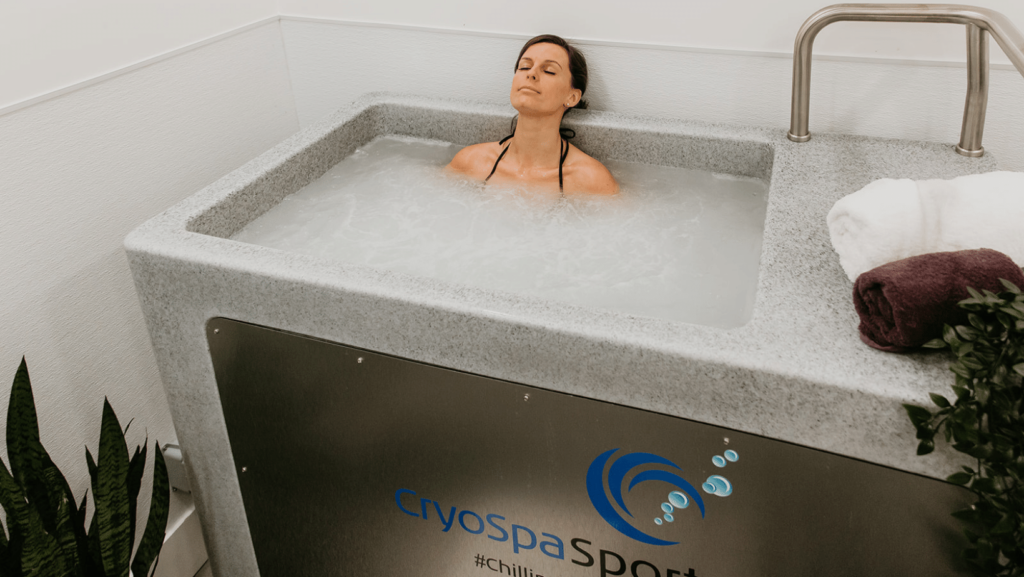Recovery for Tendonitis
When you’re experiencing an injury or pain, you want to improve comfort and support healing. Heat therapy and cold therapy are standard treatment options for the aches and swelling caused by tendonitis. Yet, which is the better option? Or should you alternate for improved recovery?
Learn when you should apply heat or cold with Recovery Lab.
Choosing Between Heat & Ice
Both heat and ice have benefits. Mainly, heat promotes blood flow, while ice is best for reducing inflammation. Notably, a combination of heat and ice can improve recovery. But which should you apply first?
Well, it depends on whether you have tendonitis or tendonosis. The conditions share similarities, but each requires a distinct treatment approach. Tendonitis is acute (meaning sudden onset), whereas tendonosis is chronic (meaning long-developing).
Tendonitis is when tendons become inflamed or irritated. Tendons are fibrous connective tissue that attaches muscle to bone. When the tendon is inflamed, it can affect the joint and movement. It’s often caused by repetitive motion or overloading the joint, resulting in injury. Medications, aging, and certain antibiotics are also risk factors.
Tendonitis causes:
- Soreness or pain
- Swelling
- Stiffness or tightness
Tendonosis or tendinopathy occurs when the collagen (a structural protein) supporting tendon health deteriorates. It is often caused when a person overuses their tendon, usually due to repetitive actions over time. When short-term tendonitis goes untreated, it can develop into tendonosis.
Tendonosis symptoms include:
- Pain (tendon movement or touch)
- Stiffness or restricted movement
- Tender lump formation
When symptoms of tendonitis first develop, treating the injury with ice can reduce inflammation. It would also help if you rested the area for a few days. If there are no signs of improvement, you should contact a doctor to assess the condition.
When you experience repeated cases of pain and stiffness from the same tendon, it’s more likely a case of tendonosis. There is no swelling to treat, so ice is ineffective. Instead, you should apply heat to encourage blood flow and relieve stiffness.
For example, well-known conditions like tennis elbow and swimmer’s shoulder are sometimes incorrectly labelled as tendonitis—yet these are actually tendonosis. Getting professional advice can help you apply the appropriate treatment to support recovery.
How to Apply Ice
When applying ice at home, remember to:
- Elevate the injury: Comfortably set your wrist, foot, or affected area in an elevated position to help reduce swelling.
- Move the ice around: Sitting too long in one spot can lead to frostbite, increasing swelling and causing blisters.
- 10 minutes: Keep the ice on for up to 10 minutes. If the area becomes numb, it’s time to remove the ice.
- Warm Up: Allow at least 30 minutes between icing the area to allow the skin to warm up.
- Repeat as Necessary: After allowing your skin to warm to the touch, you can reapply ice as many times as necessary to help control swelling.
Ice is a helpful solution for controlling pain and swelling, but it does not speed up healing. That’s why giving your healing tendon an ice break is crucial, allowing it to warm up and improve blood flow. After getting swelling under control, you may consider alternating between cold and heat.
How to Apply Heat
When applying heat at home, remember to:
- Watch your skin: Heat can be applied for much longer than ice, but you should be careful of burning your skin. Don’t directly apply heat that is uncomfortable or painful to the touch.
- Consider longer sessions: Enjoy a warm bath or sauna for relaxing heat. Although you may experience relief within 15–20 minutes, longer heat sessions may be better for severe pain or stiffness.
- Alternate hot & cold: If you experience minor swelling but find heat relieves discomfort, you may benefit from alternating hot and cold. Contrast baths are one example.

Healing Techniques
When you’re looking to support your recovery, considered these 2 therapy options.
Infrared Sauna
An infrared sauna uses infrared light to generate dry heat. Although the heat therapy benefits are similar to a traditional sauna, the experience can be more comfortable without the moist, stifling heat. The temperature is lower, but more heat directly warms your body.
Heat therapy with an infrared sauna can:
- Improve circulation
- Lead to clearer, tighter skin
- Promote better sleep & relaxation
- Relieve soreness or stiffness
- Support weight loss
CryoSpa Cold Therapy
CryoSpa cold therapy is the modern form of an ice bath. Cold water immersion can help:
- Alleviate muscle soreness
- Boost the immune system
- Ease symptoms of anxiety & depression
- Reduce inflammation
Cold water therapy is also beneficial as a cooldown method when you’re overheated or want to recover quicker post-workout. Immersing your whole body (rather than soaking your wrists or scalp) can lower your body temperature twice as fast as unaided recovery.
Find Your Recovery Solution
When nursing a recent injury or searching for a chronic pain solution, it’s best to get professional care. At Recovery Lab, we’re dedicated to your complete wellness. We want to provide you with solutions for your health and recovery.
Without treatment, tendonitis can affect your comfort and function. You deserve every opportunity to enjoy movement. Contact us at Recovery Lab for heat or cold therapy today.



